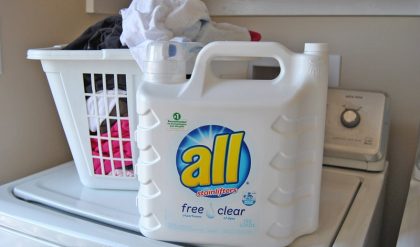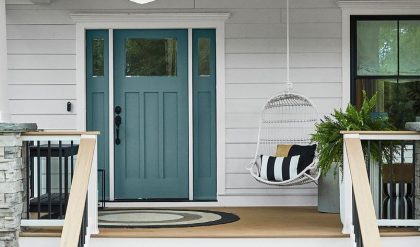
Declutter Your Home in 5 Easy Steps: A Guide to Organized Living
Feeling overwhelmed by the stuff surrounding you? Your home, instead of being a sanctuary, feels more like a storage unit? You’re not alone. Many of us struggle with clutter, but reclaiming your space is easier than you think. This isn’t just about tidying; it’s about creating a home that nurtures your well-being. Let’s embark on a journey to a more organized, peaceful life with these five simple, yet transformative steps.
Step 1: The Mindful Purge – Letting Go of the Excess
Before you even touch a single item, shift your mindset. Decluttering isn’t about discarding everything you own; it’s about consciously choosing what truly serves you. This requires a gentle but firm approach.
The 20-Minute Rule: Set a timer for 20 minutes and focus on one area. A drawer, a shelf, a corner – choose something manageable. The key is consistency, not intensity. Repeated short bursts are far more effective than one monumental, overwhelming session.
The Four-Box Method: Gather four boxes labeled:
| Box | Description |
|---|---|
| Keep | Items you use regularly and cherish. |
| Donate | Items in good condition you no longer need. |
| Trash | Broken, damaged, or unusable items. |
| Maybe | Items you’re unsure about. We’ll tackle these later. |
This system prevents decision fatigue and allows for a structured approach.
Step 2: Categorize and Conquer – Finding a Place for Everything
Once you’ve purged, it’s time to organize what remains. Categorizing items makes it easier to find what you need and maintain order.
Vertical Organization: Utilize vertical space with shelves, drawers, and stackable containers. Think upwards!
Like with Like: Group similar items together. All your books on one shelf, all your kitchen utensils in one drawer. This instantly creates a sense of order.
Step 3: Strategic Storage – Maximizing Space and Functionality
Smart storage solutions are the backbone of a clutter-free home. Don’t just shove things away; invest in storage that enhances accessibility and aesthetics.
Utilize Underutilized Spaces: Think under-bed storage, wall-mounted shelves, or even the space inside cupboard doors.
Clear Containers: Transparent containers allow you to see what’s inside, preventing you from buying duplicates or forgetting what you already have.
Step 4: The Power of “One In, One Out” – Maintaining the Momentum
The hardest part is often maintaining the newly decluttered space. Implementing the “one in, one out” rule is a game-changer. For every new item that enters your home, an old, similar item must leave. This prevents the accumulation of clutter and keeps you mindful of your possessions.
Step 5: Celebrate Your Success – The Rewards of a Clutter-Free Life
Decluttering is a journey, not a race. Celebrate your progress along the way. A clutter-free home isn’t just aesthetically pleasing; it’s mentally and emotionally liberating. You’ll experience reduced stress, increased productivity, and a newfound sense of calm. Enjoy the fruits of your labor! Your organized space reflects an organized mind, ready to tackle life’s challenges with clarity and focus.

Additional Information
Decluttering Your Home: A Deeper Dive into Organized Living
The seemingly simple act of decluttering transcends mere tidiness; it profoundly impacts mental well-being, productivity, and even financial health. While a “5-easy-steps” guide offers a helpful framework, a deeper analysis reveals the complexities and nuanced strategies required for sustainable decluttering success. This expands on the basic framework, offering a more analytical and comprehensive approach.
Beyond the Five Steps: Unpacking the Nuances
A typical “5-step” guide might outline:
- Sort: Categorize items into keep, donate, sell, and trash.
- Purge: Dispose of unwanted items responsibly.
- Organize: Implement storage solutions and systems.
- Maintain: Establish routines for preventing future clutter.
- Re-evaluate: Periodically reassess your system.
While these steps are fundamental, success depends on understanding the underlying psychological and practical challenges:
1. The Psychology of Letting Go: The “sort” phase often reveals the emotional attachments we have to possessions. Sentimental items, gifts, or “someday” projects create significant resistance. This necessitates a mindful approach. Techniques like the “one-in, one-out” rule or the “20/20 rule” (if replacing an item costs less than 20 dollars and saves 20 minutes of time, it’s worth it) can help. Cognitive Behavioral Therapy (CBT) principles can be applied; challenging negative thoughts associated with discarding items (“I might need this someday,” “This was a gift, I can’t get rid of it”) and replacing them with more realistic assessments.
2. Effective Purging Strategies: Responsible disposal goes beyond simply throwing things away. Donation to charities maximizes the social benefit, while selling unwanted items through online marketplaces or consignment shops can generate extra income. Recycling and proper waste disposal are crucial for environmental consciousness. Statistics show that Americans generate an enormous amount of waste annually, underscoring the importance of responsible purging. (Source needed: EPA data on municipal solid waste).
3. Strategic Organization: Beyond Aesthetics: Effective organization isn’t just about visually appealing storage solutions. It demands an understanding of workflow and accessibility. The placement of frequently used items should prioritize ease of access, minimizing wasted time and effort. Consider the principles of “lean manufacturing” – eliminating unnecessary movement and maximizing efficiency in your home environment. This might involve zone-based organization (grouping items by function within specific areas), or implementing vertical storage solutions to maximize space.
4. Sustainable Maintenance: Habit Formation: Maintaining a clutter-free environment requires establishing consistent routines. This isn’t about rigid adherence but about building sustainable habits. Techniques like the “two-minute rule” (if a task takes less than two minutes, do it immediately) and scheduled decluttering sessions (e.g., 15 minutes each evening) can help. Habit stacking – linking a new habit to an existing one (e.g., decluttering the kitchen counter after making coffee) – is also effective.
5. Re-evaluation and Adaptation: Decluttering isn’t a one-time event. Our lives change, our needs evolve. Regular re-evaluation is essential. Seasonal changes, lifestyle adjustments, and family growth might necessitate alterations to your organizational system. This continuous adaptation ensures that the system remains effective and functional over the long term.
Case Study Example: A family of four experiencing significant stress due to a cluttered home implemented a zone-based system, focusing on one area per week. They combined this with a “family decluttering night” – allocating 30 minutes each week for collective purging and organization. The results showed a significant reduction in stress levels and improved family dynamics, highlighting the interconnectedness of physical and mental well-being.
Conclusion:
Decluttering is a multifaceted process that requires a thoughtful and strategic approach. While a 5-step guide provides a starting point, success relies on understanding the underlying psychology, implementing effective purging and organization strategies, and establishing sustainable maintenance habits. By adopting a more comprehensive and analytical approach, individuals can achieve not just a tidy home, but a more organized and fulfilling life.






